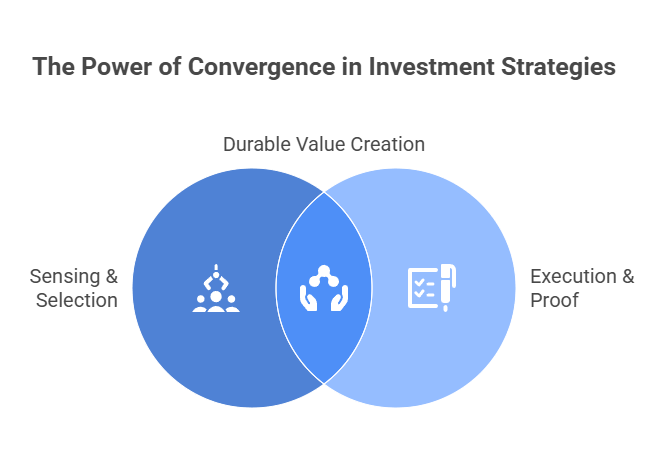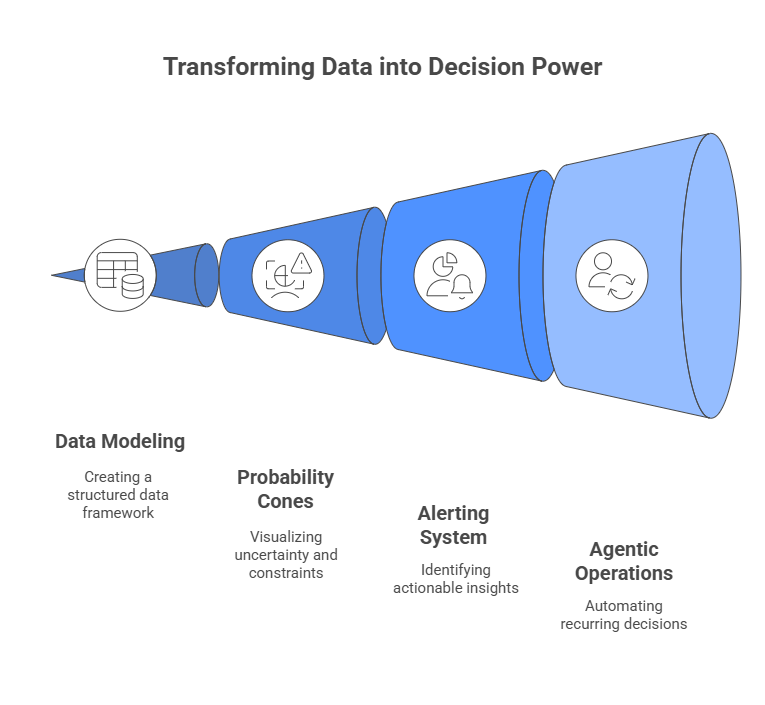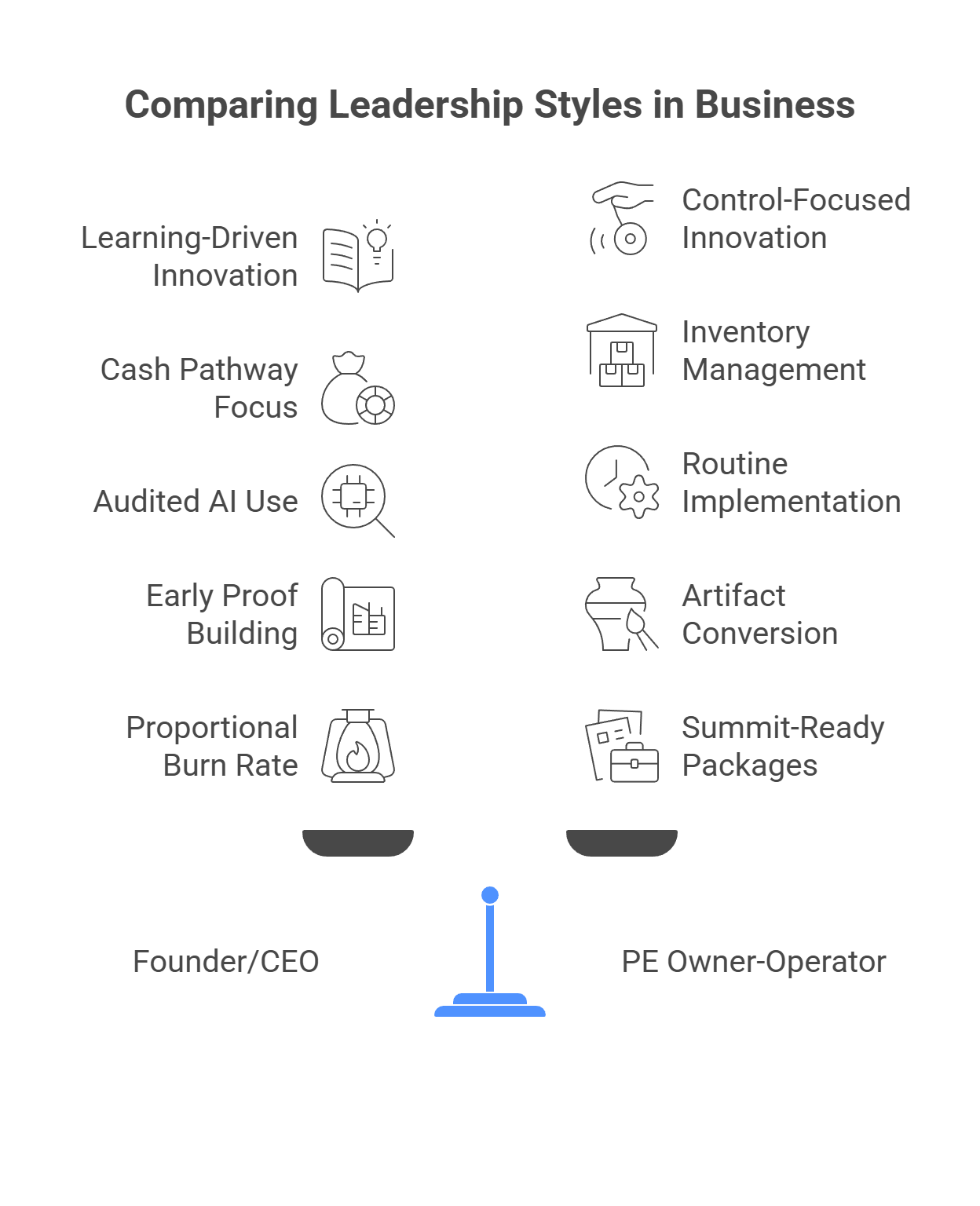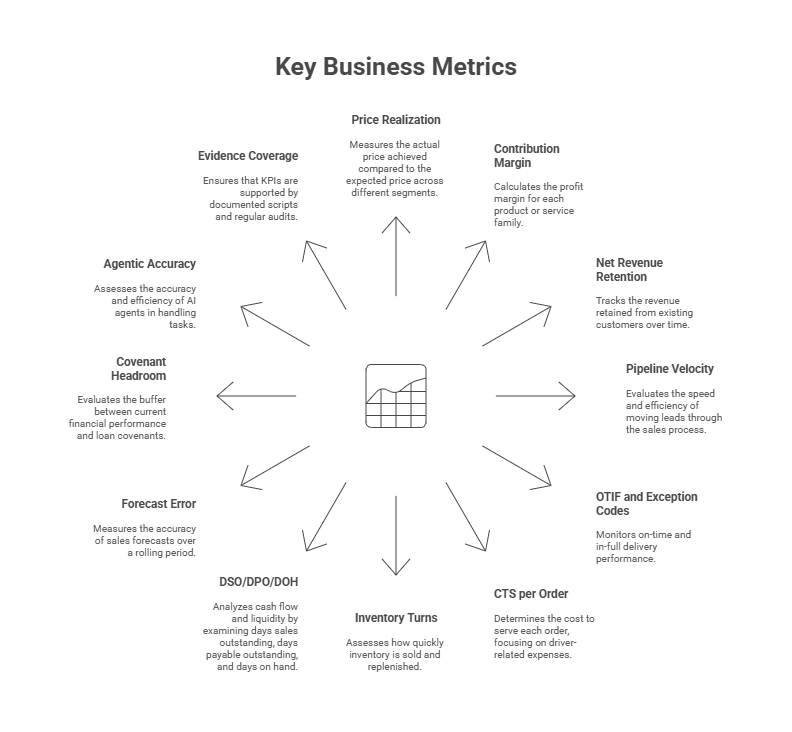The Convergence Thesis 2.0: Where AI, Builder-Founders, and Operating Discipline Compound
Oct 25, 2025
Capital is plentiful, certainty is not. Interest rates reset the math on leverage, exit windows open and close without notice, and every company now lives somewhere on the AI curve—either learning to wield it or being reshaped by those who do. In this cycle, outperformance will not come from a single craft. It will come from convergence: venture’s speed at finding non-obvious opportunities, private equity’s discipline at turning operating levers, and an AI-native toolchain that shortens the distance from signal to action.
This article reframes the Convergence Thesis for CEOs and investment committees. It is not a manifesto; it is a working model—what to build inside the firm, where to invest outside, how to underwrite and govern, and which failure modes to avoid.

1) What “convergence” actually means (and what it doesn’t)
Convergence is not a blended fund label or an excuse to chase everything. It is a capability stack that travels across deal types:
-
Sensing: outside-in signals and low-latency analytics that spot change early (customer demand, pricing behavior, service friction, hiring velocity, cyber exposure).
-
Selection: founder and operator calibration that predicts learning speed and decision quality under uncertainty.
-
Execution: a small set of operating routines—pricing, cost-to-serve (CTS), working capital, right-sized PMO—that move EBITDA and cash reliably.
-
Proof: buyer-grade evidence (scripts, reconciliations, security drills) archived monthly so value travels at exit.
Every investment style can house this stack. Venture uses it to de-risk PMF and go-to-market; growth equity uses it to scale without waste; buyout uses it to engineer durable improvements and headroom.

2) Build the internal engine first: from dry powder to decision power
Convergence fails when firms import AI as slides. It works when they wire fund-level telemetry to operating decisions.
A. Data & lineage
Create a minimal, repeatable data model that rolls portco KPIs → EBITDA bridge → cash → covenants. Store the exact scripts behind each KPI. Reconcile monthly. Archive to immutable storage. If a stranger cannot rerun a metric in 30 minutes, it isn’t decision-grade.
B. Probability cones
Render three cones per asset and in aggregate—Cash, MOIC, Headroom—with P50/P10 paths. Cones do two things: expose uncertainty honestly and force resource allocation to the tightest constraints.
C. Alerting that points to levers
Don’t predict for sport. Route variance to lever classes the operating bench can pull: pricing compliance, AR disputes, inventory turns, SG&A run-rate, retention drivers. If a model can’t point to a lever owner, it’s still research.
D. Agentic operations, gated
Use agents where decisions recur and outcomes are observable: dispute triage, ticket routing, fraud screens, contract extraction, CPQ guardrails. Gate with five tests—eligibility, evidence, guardrails, auditability, escalation—and keep a kill-switch with a named owner.
Outcome: the IC debates trade-offs, not data integrity; the lender believes your headroom math; operating partners arrive with the right playbook sooner.
3) Where to deploy outside the walls
Convergence does not mean backing a fad. It means placing disciplined bets where technology + operating cadence compound.
A. AI infrastructure and orchestration
Invest in enabling layers that every intelligent workflow needs: data plumbing, identity, safety, observability, workload scheduling, and cost control. Favor modular architecture that ports across industries and survives upgrades.
B. Agentic workflows in real-economy services
Underwrite software where the unit of value is a decision made better or faster (pricing suggestions, underwriting triage, maintenance scheduling, claims adjudication). Demand evidence of accuracy, rollback, and cash conversion.
C. Supply-chain resilience platforms
Shift from lowest cost to assured flow. Back visibility, multi-sourcing, and inventory intelligence tools paired with operator routines (MOQ discipline, SLOB actions, lead-time hygiene). Value creation shows up in turns, expediting avoided, and service kept.
D. Human-in-the-loop productivity (“Industry 5.0”)
Tools that augment skilled labor (field service, healthcare ops, specialized BPO) outperform those that promise to replace it. Price value as cycle time saved, errors prevented, or revenue recovered—not monthly seats alone.
E. ESG 2.0 (from compliance to cash)
Prioritize carbon and waste reductions that lower COGS or unlock bids; safety and access controls that reduce insurance and downtime; governance that lowers transaction friction. Treat ESG as operational alpha, not a chapter.

4) Who to back: the evolved founder and the owner-operator
Convergence rewards co-builders—leaders who treat capital as a delivery mechanism for capability.
Founder/CEO signals that travel across cycles
-
Runs on a learning agenda with falsifiable tests and dates; kills ideas quickly.
-
Talks in pathways to cash (retention shape, payback, realization), not slide theater.
-
Treats AI as electricity: useful, dangerous, audited.
-
Builds proof early: scripts, cohorts, decision logs.
-
Keeps burn proportional to learning speed, not story velocity.
PE owner-operator signals
-
Codifies controllables fast: CPQ bands, exception lanes with expiry, CTS policies.
-
Moves two big families of inventory, not 1,000 SKUs lightly.
-
Converts diligence artifacts into weekly routines within 30 days.
-
Packages monthly binders a buyer could run without a summit.
5) Underwriting in a constrained market: evidence over rhetoric
Write the exit at signing. Then run to the evidence.
Fit proof → Synergy proof → Integration proof → Exit proof
-
Fit: routes to market, price fences, and service models align without margin give-up.
-
Synergy: probability-weighted items with owners, ramp, and cash conversion (not just EBITDA).
-
Integration: Day-1 revenue protection, Day-30 harmonization, Day-100 tool and SKU rationalization; TSA burn-down clock.
-
Exit: a buyer-grade binder—price waterfall history, CPQ exports, CTS outcomes, 13-week cash snapshots, access inventories, incident drills.
If you can’t reproduce each claim in half an hour, you don’t own it.
6) Governance: keep the flywheel honest
Convergence collapses without a short, unglamorous rhythm.
-
Weekly performance room (45 min): value bridge → top five deltas → decisions; decisions logged.
-
Pricing council (30 min): realization trend, override log by reason/expiry, rule approvals.
-
13-week cash stand-up (30 min): forecast vs actual; AR/AP/inventory actions; headroom bar.
-
Monthly audit (30 min): pick one KPI and rerun from script to ledger; publish methods note.
-
Quarterly security drill (30 min): runbook, roles, timing; record actions and fixes.
Tie a small slice of partner carry to variance closure speed and cone accuracy. You’ll talk about outcomes, not dashboards.

7) The 12 metrics that actually matter (and travel)
-
Price realization by segment
-
Contribution margin by SKU/service family
-
Net revenue retention and cohort health
-
Pipeline velocity (qualified → close; cycle time, win rate)
-
OTIF and exception codes
-
CTS per order (driver-based)
-
Inventory turns (focus families) and SLOB actions
-
DSO / DPO / DOH and cash unlocked
-
13-week forecast error (rolling two-week)
-
Covenant headroom (trend + sensitivity)
-
Agentic accuracy / escalation rate / time-to-rollback
-
Evidence coverage: % KPIs with stored scripts and monthly tie-outs
If a KPI doesn’t change a decision or reconcile to the ledger, it doesn’t belong on your page.
8) Antipatterns that quietly destroy returns
-
Multiple cosplay: adding “AI” to the deck without changing cycle time or cash.
-
List-price heroics: asserting pricing power without CPQ enforcement; realization doesn’t move.
-
Pilot purgatory: many proofs, zero production; no kill-switch, no owner.
-
Integration theater: synergy numbers unweighted, TSA open-ended, stranded costs ignored.
-
Archive amnesia: no immutable binder; six months later the narrative can’t be replayed.
9) A 90-day agenda to operationalize the thesis (for any firm type)
-
Days 1–30: build the truth set (12 months), publish KPI dictionary, turn on the three cones, and light the meeting spine. Freeze dashboard proliferation; route all metric changes through one owner.
-
Days 31–60: enforce CPQ bands; ship two CTS policy pilots; stand up a Level-2 agent for one repeatable decision with full audit trail.
-
Days 61–90: data room pack v1; monthly immutable archive; buyer Q&A rehearsal (rerun one KPI live; show override log; walk a cash variance and its closure).
This is not a transformation program. It’s a drumbeat. Miss a week; you feel it.
10) The payoffs of convergence
-
Fewer surprises, earlier. Cones and lineage turn uncertainty into bounded probabilities.
-
Faster no-go calls. Outside-in signals + reproducible tests compress time-to-pass and save fees.
-
Cleaner diligence both ways. You can rerun your numbers; so can your buyer or lender.
-
Higher exit multiples. Not by declaration, but because risk is contained and proof travels.
-
Talent gravity. Operators choose rooms where decisions stick and evidence matters.
Bottom line
Convergence is not a marketing line. It is a way of operating: sense earlier, decide faster, execute on the few levers that always pay, and package the proof so anyone can verify it. In a cycle where money is common and conviction is rare, that is the edge.
VCII Note and Copyright
TVC Next installs the convergence stack—fund-level telemetry, lever playbooks, and buyer-grade evidence—so venture agility and PE discipline compound into operational alpha.
Copyright © 2025 VCII, Meritrium Corp. All rights reserved.
We have many great affordable courses waiting for you!
Stay connected with news and updates!
Join our mailing list to receive the latest news and updates from our team.
Don't worry, your information will not be shared.
We hate SPAM. We will never sell your information, for any reason.


